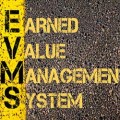
Mismanaging project costs is the single fastest way to cause project failure.
The project costs represent the many multi-faceted experiences that occur on a project, however stakeholders see only the bottom line and draw rapid conclusions from it.
For this reason, the planning of the management of project costs is the focus of the Project Management Body of Knowledge’s Plan Cost Management process, contained within the Project Cost Knowledge Area.
PMBOK, Section 7.1, “Plan Cost Management”
Plan Cost Management is the process of defining how the project costs will be estimated, budgeted, managed, monitored, and controlled. The key benefit of this process is that it provides guidance and direction on how the project costs will be managed throughout the project
Cost Management Plan
The Project Cost Management Plan is a component of the overall Project Management Plan. It provides the details of how the project costs will be estimated, tracked, and controlled.
The Cost Management Plan is important because the project manager’s ability to influence project costs starts high and decreases as the project goes on. It contains four major sections:
- Resource planning
- Estimating
- Project Budgeting
- Cost Control
Resource Planning
During the project planning phase, the resources need to be itemized and categorized.
The time value of money is often a consideration. Return on Investment, Net Present Value, and payback period, if applicable, contribute to the business case for the project. Funding requirements often require this type of analysis to determine when the funds will be released.
Project stakeholders should be consulted to ensure a complete buy-in prior to project execution. Keep in mind stakeholders tend to measure project costs in different ways, for example when an item is delivered vs. ordered.
The Project Cost Management Plan contains the following items:
- Required resources – Labor, materials, tools, equipment, and subcontractors
- Services that must be procured
- Strategies for contingencies
- Financial requirements – Insurance, bonding, and financing requirements
Project Estimating
Almost all projects need estimates. In order to be approved by the applicable authorities, the amount that the project will cost is usually a major variable.
Prior to the estimate stage, the project has been divided into work packages in a Work Breakdown Structure (WBS). The WBS is simply a subdivision of the project into tasks.
Each item in the Work Breakdown Structure is estimated. The hours, tools, equipment costs, and subcontractors are estimated to produce a final task estimate for each task.
Each estimate is produced using either analogous or parametric estimating techniques.
Analogous Estimating
Analogous estimating involves comparing to previous, similar projects. The actual cost of the previous project is revised and adjusted to account for the different variables present at the new project.
Parametric Estimating
 Parametric estimating involves reverting to unit costs, such as cost per square foot of house construction. Often, these variables are published in commercial sources or well known to the organization.
Parametric estimating involves reverting to unit costs, such as cost per square foot of house construction. Often, these variables are published in commercial sources or well known to the organization.
In addition, to avoid estimating errors the estimator can use Three Point Estimating techniques
Three Point Estimating
In this technique, you determine an optimistic and a pessimistic estimate, and average them:
E = (a + m + b) / 3
Where:
- E = Expected Cost
- a = Pessimistic Estimate
- m = Most Likely Estimate
- b = Optimistic Estimate
Alternatively, if you wish to produce an estimate that is tighter to the Most Likely (m) value, you can use the beta distribution:
E = (a + 4m + b) / 6
For the estimating phase, the project cost management plan contains the following items:
- Person responsible for estimating
- Person responsible for reviewing and/or approving estimates
- Where the estimates come from, for example, published commercial information
- Who will approve the final project cost
- The techniques that will be used to produce the estimates
- Milestones at which the estimates will be revisited and re-approved
- Special circumstances under which the estimates be revised, and how they will be revised
- Coordination with external sources (funding)
Project Budgeting
Following the production of estimates the final project budget is produced by adding each estimate together to produce an overall budget for the project.
At this stage the contingencies are considered. The contingencies are determined from the risk analysis performed during the planning stage. The risk register is consulted to determine what the major risks to the budget are, and the greater the potential for loss, the greater the contingency allocated to it.
Often the traditional “contractor trade off” must be considered, whereby the organization will risk losing the job if it does not bid low enough. The estimator must balance the risk of losing the project with the risk of getting the project but losing money (or not meeting the expectations of the overall organization).
Contingencies
Amounts placed within individual task estimates to account for “known unknowns” are called Contingencies. These are used to account for things that are known to be uncertain. For example, in a bridge building project the potential rise in streamflow could represent a good reason to increase estimates. You don’t know if it will happen, but it might.
Management Reserves
Amounts placed for “unknown unknowns” (unexpected issues) are called Management Reserves. These are often placed on to the entire project rather than individual tasks because it is difficult to assess and manage how many unexpected issues could occur on individual tasks.
Many organizations track the cost escalation on past projects and allocate this to each future project as a Management Reserve. This can be either a percentage or a fixed fee.
For the overall budgeting phase, the Cost Management Plan contains the following items:
- How much contingency to include in each task
- Quantity of Management Reserve to include in the entire project
- Methodology, assumptions, and/or background information
Cost Control
Most projects have cost accounts into which each cost is placed for tracking purposes. These cost accounts are correlated to the task list, that is, the Work Breakdown Structure (WBS).
To maintain strong project control during the project execution phase, the project manager uses Earned Value Management. This means that at specified intervals, usually one week, the following variables are measured from actual project performance.
- Planned Value (PV). The amount planned to be spent according to the project schedule. For example, if today is Day 20, and the schedule shows task #1 is to occur from Day 1 – Day 30, the PV is equal to two-thirds of the task budget.
- Earned Value (EV). The amount of actual progress expressed as a percentage of the task budget. For example, if today is Day 20, and task #1 is 50% complete, the EV is one-half of the task budget.
- Actual Cost (AC). The actual expenditures for the task.
Although there are many variables calculated in the earned value analysis, the following represent the basic minimum to ascertain the project’s cost performance:
- Cost Variance (CV). This value represents the difference between the planned cost and the actual cost as of the point of analysis.
CV = EV – PV - Cost Performance Index (CPI). This value represents the cost variance (above) relative to the overall cost of the project.
CPI = EV / PV
These two variables tell the project manager the cost/budget status of the project right up to the point of analysis, relative to the expected performance of the project at that point. It tells you how badly action needs to be taken to bring the project costs in line, and they represent actionable variables that project managers can use to govern their day-to-day activities to keep the project in line.
The Project Cost Management Plan contains the following items:
- How the project costs will be measured
- Who will measure the costs
- How often they will be measured and/or input into software
- Who will approve them
- How certain purchases will be made
- Whether purchases will be financed: Purchasing, Leasing, Renting or Making
- How project performance will be measured
- Who will produce performance reports
- Who will receive performance reports
- Which Earned Value variables will be reported.
To make sure you never go over budget again, or to learn more about earned value analysis, we’ve developed a helpful Earned Value Tutorial. Let me know what you think in the comments below.






